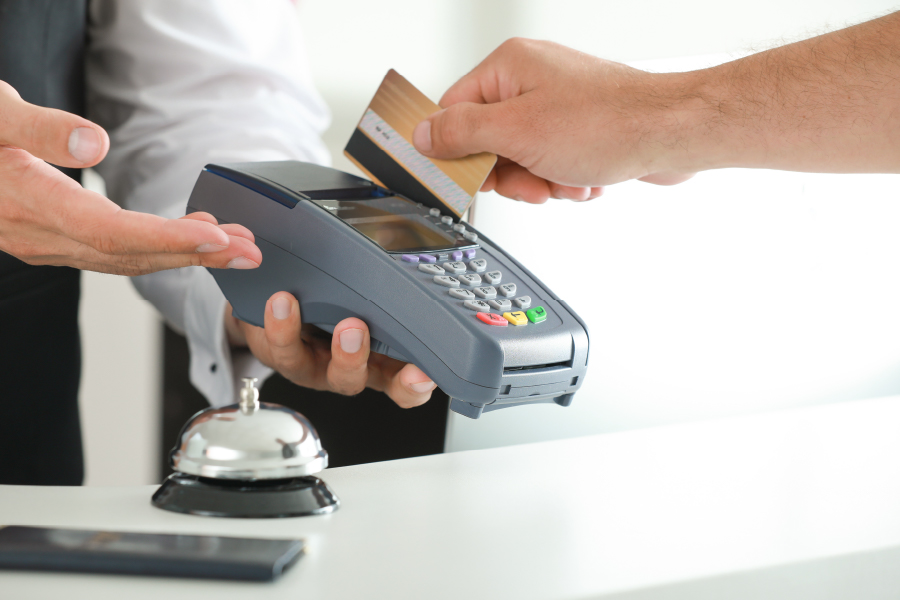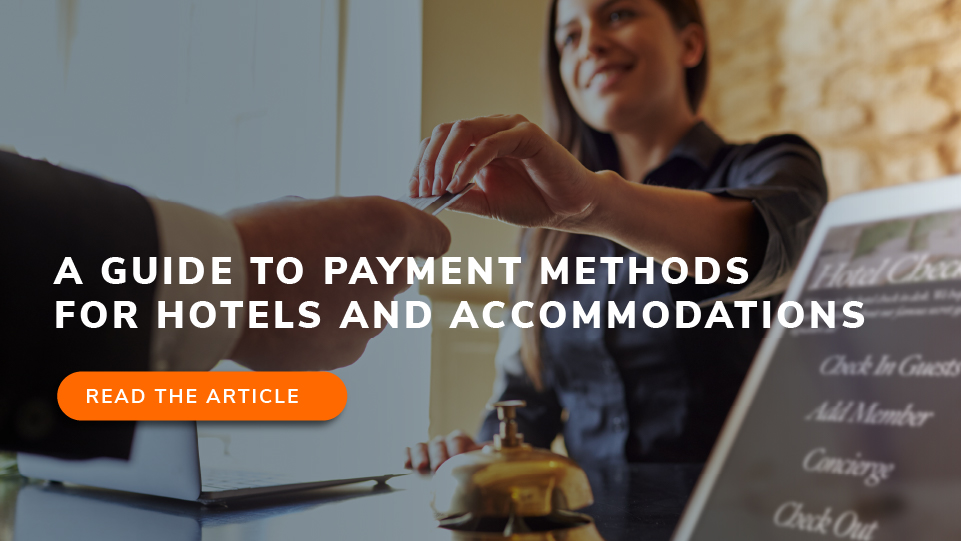Dear WuBookers, accepting different payment methods contributes to the satisfaction of the guest, who can complete the transaction using the system they prefer, in total convenience. On the other hand, automated payment transactions can also improve the operations of hotel staff and reduce the risk of errors or, worse, guest complaints. The benefits are many: so let’s see what are the most common-and expected-modes in the hospitality industry.
Hotel payment systems: how many and what are they?
“More and more Italians are choosing to pay by card, smartphone or other devices, given their simplicity and immediacy”. That’s according to the latest report conducted by the Innovative Payments Observatory of the Politecnico di Milano. Complicated by the pandemic, the last two years have in fact seen a significant increase in digital and remote payments. Despite the fact that cash remains the payment instrument most used by Italians, ECB data on the number of card transactions per capita recorded in 2022 confirm that Italy is one of the countries with the highest growth in the last year (+20.5%).
Looking specifically at the hospitality industry, the main cashless payment methods are 4:
- Credit or debit card;
- Bank transfer;
- Online payment gateways;
- Mobile payment apps.
Credit or debit card
The credit or debit card can be used for physical payments (via POS system, which stands for point of sales) or digital payments. It is a reliable method for both the guest and the hotelier, since it draws directly from the guest’s bank account.
Very often, instead of debit or credit cards, prepaid cards are used, i.e., loaded with an amount defined by the owner. While prepaids are a secure payment instrument, they offer the hotelier less security in receiving payment because the funds may not be sufficient to cover the charge.
Bank transfer
Bank transfer is also a direct payment method that protects both parties and eliminates the need to physically handle the card. Important transactions or group bookings are often made using this system.
It should be remembered, however, that the time taken to credit is not immediate and can vary, reaching up to 5 business days.
Online Payment Gateways
Online payment gateways, facilitate transactions by linking hotel reservation systems to various payment methods. They provide a secure and encrypted environment for payment processing, increasing guest confidence. Examples of payment gateways are Stripe Connect, MercadoPago, PayPal, Nexi, and Redsys.
Mobile payment apps
Mobile payment apps such as Apple Pay (for iOS devices) and Google Wallet (for Android) are particularly popular with tech-savvy travelers. In line with the growing trend toward mobile-first solutions, this form of payment involves the storage – by the user – of their payment information within the app. At the time of the transaction, simply bring the smartphone closer to the POS. The payment from the guest to the merchant is contactless (in fact, it takes advantage of NFC, or Near Field Communication, technology) and is virtually instantaneous, as well as secure.

Manage Card Not Present payment methods
Talking about credit cards, we mentioned the possibility that a reservation is made online, that is, without the owner (or credit card) being physically present at the facility. This type of transaction is called CNP, that stands for Card Not Present, and is subject to specific regulations designed to protect users and their bank data when making online payments, thus reducing the risk of fraud.
The European Payment Services Directive 2 (PSD2) – officially operational in Italy as of September 14, 2019 – has introduced new authentication and security standards for authorizing electronic banking transactions.
One of these is the SCA (Strong Customer Authentication or strong authentication) system, which provides additional verification of the cardholder’s identity through at least two of the following: password or PIN, cell phone or hardware token, fingerprint or facial recognition.
To ensure that legal requirements are met, you must provide your customers with secure and compliant payment systems, such as through PSD2-compliant payment gateways.
The end of MOTO operations?
Online channels are not the only channels in which a CNP payment can take place. So-called MOTO transactions, an acronym for Mail Order Telephone Order, fall into this category.
Communicating card data via email or by phone, or even in person, to the hotel operator for him to make the transaction (the traditional manual PAN), is not uncommon. However, it is considered a high-risk method, because that same data could be lost or stolen, resulting in damage to the customer and the hotelier.
Not only that, if the collection takes place in the absence of the guest, it exposes the establishment to possible disputes from the card owner, who may disallow the payment and open litigation.
If you decide to proceed in this way, it is then necessary to find out about the safeguards in place to avoid chargebacks (i.e., cancellation of the transaction) and to adopt technological solutions that ensure the protection of sensitive customer data.
Certainly current regulations and general trends are increasingly moving in the direction of limiting manual PAN in favor of electronic forms of payment.

Zak for online booking and payment management
But how to facilitate the digitization of sales in a way that is equally secure and easy to manage? There are 3 main tools to ensure that the facility is prepared for online payment processing: the booking engine, the channel manager, and the PMS.
Zak’s Booking Engine
The booking engine allows direct bookings to be obtained from the hotel’s proprietary channels (such as the website), eliminating brokerage costs, so it is essential that it integrates different payment solutions.
Such is the case with Zak’s Booking Engine, WuBook’s hotel, vacation home and B&B management system that supports a variety of payment gateways for online sales. At the time of booking on the property’s website, the online payment gateway authorizes the customer’s credit card information by applying the SCA and takes the expected amount according to pre-set rules. This can be the full amount or only a certain percentage, or a fixed rate. The hotel can also simply save the credit card profile upon authorization from the booker (always in accordance with data protection policies), to process it at checkout or if the guest does not show up.
Zak’s Channel Manager
The channel manager is key to facilitating online reservations and thus digital payments on other distribution channels as well. OTAs such as Booking.com and Airbnb offer users different payment models: the guest can decide, for example, to pay at the time of booking or at check-in. In the former case, the OTA charges the guest’s credit card immediately and, at the end of the stay, pays the property the agreed amount. Payment and customer information must be transferred securely and seamlessly from the portal to the hotel front desk (and vice versa for any cancellations and refunds): Zak’s Channel Manager automates the entire process.
If, on the other hand, the guest chooses to pay in person at the hotel, commissions are paid to the OTA by the hotel after payment is received from the guest.
Zak, the all-in-one PMS
The property management system (PMS), too, is crucial for simplifying online payment processing and ensuring compliance with international regulations. WuBook’s Zak makes it possible to automate the entire process of collecting, storing and reporting guest information according to current security protocols.
Not only that, it is configured to work with popular payment gateways, allows payments with multiple currencies, and enables guests to check in automatically.
When a guest or hotel staff enters a new reservation, the PMS generates a link that can be sent to the guest for him or her to enter the required data to make payment independently.
In addition, Booking Engine and Channel Manager are already integrated: this way, all booking and payment information are transmitted directly from the booking location (whether your website or an OTA) to the reception for centralized management.

Payment guarantee methods provided by WuBook
Handling credit card information does not necessarily mean charging a fee, and each hotelier may decide to require different reservation guarantees.
There are 4 methods offered by WuBook:
- Data Only: the guest is asked for his or her credit card information, but no amount is withdrawn. Due to the aforementioned PSD2, this method is no longer sufficient as a guarantee in Europe, but it still remains available to non-European customers, who are not affected by EU regulations;
- Authorization to charge: Zak requests the guest’s credit card information and authorization to charge the amount later. At which point the hotelier can make the withdrawal before, during or after the stay;
- Freezing the amount: through this method, Zak requests permission from the guest to “freeze” a certain amount. One can choose whether to freeze the cost of the first night or only a portion of the entire reservation, fixed or percentage. This is known as pre-authorization. The amount will be withheld only temporarily, depending on the payment gateway used;
- Payment: enabling this method will require the customer to make a payment immediately upon confirmation of the reservation;
- Bank transfer: the guest will display the coordinates to which the transfer must be made, and once the payment is received, the hotelier must confirm the reservation manually.
In conclusion, there are many payment systems for hospitality and each has its own advantages and requirements: integrating them into one’s business can offer extra convenience to guests and make the operations of those working in the facility easier. Provided, however, that they are managed optimally, in all aspects.
